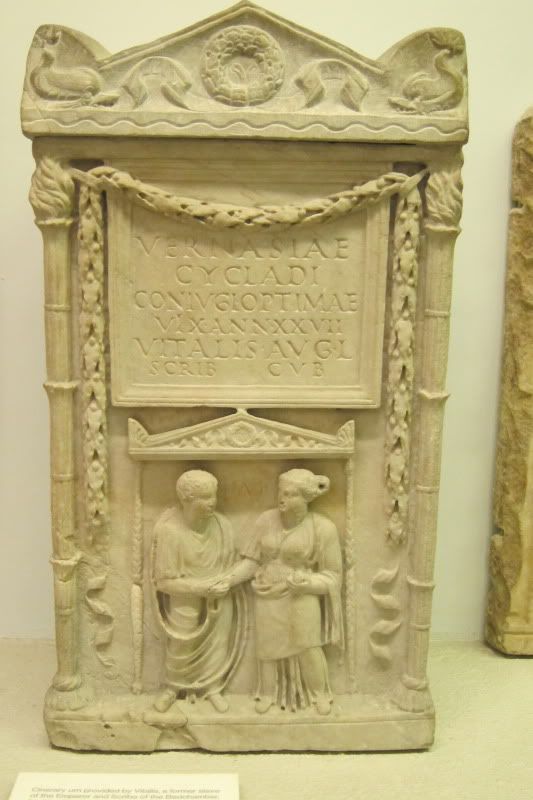A bit of love in stone
While walking through the British Museum, I pulled up short to look more closely at this Roman cinerary urn.
These urns are quite diverse - you see all kinds. They range from the simple to the incredibly elaborate, and, in a pinch, they make handy table lamps.
But what struck me as unusual about this one was the interaction of the two figures. Although not apparent in the official museum photo, it's a little easier to see in natural light. If you look closely, you can see they are looking at each other and holding hands:

One thing you usually don't see in the decoration of these urns is love or romance - simple motifs or mythological themes are far more common. In this one, though, I think you see real people with real feelings for one another.
According to the museum's notes, "the urn contained the ashes of Vernasia Cyclas, and was commissioned by her husband Vitalis who was a freed slave working in the imperial household as a scribe. Vernasia, the inscription informs us, died at the age of twenty seven and was an excellent wife."
If you look more closely, the expressions on their faces are striking. He is looking at her with humility and devotion. Tall and beautiful, she is looking at him sternly, demanding respect - but gives her hand willingly:

He really loved her, and two thousand years later we still know that.


1 Comments:
There was no dance,
and no holy place,
from which we were absent. - Sappho
Post a Comment
<< Home